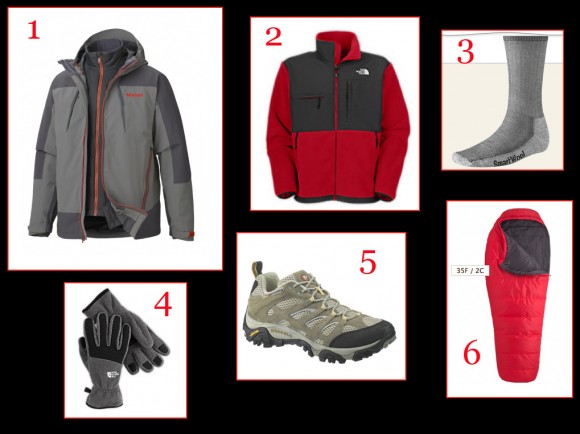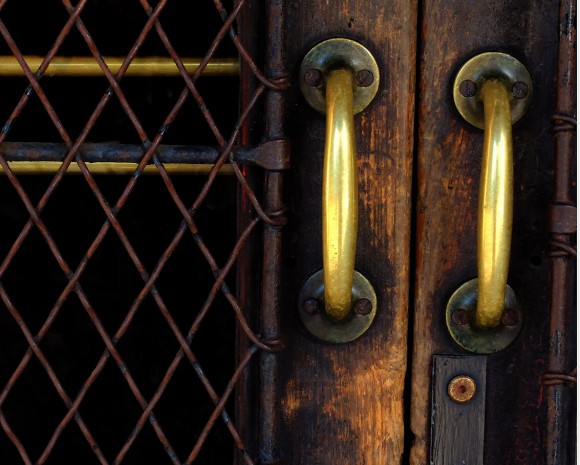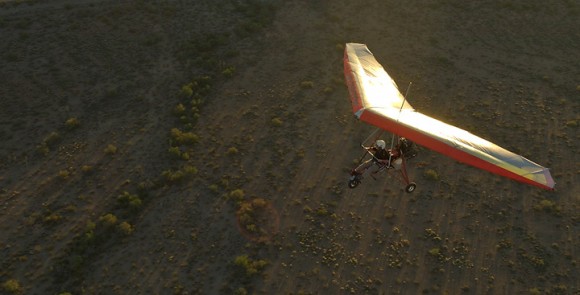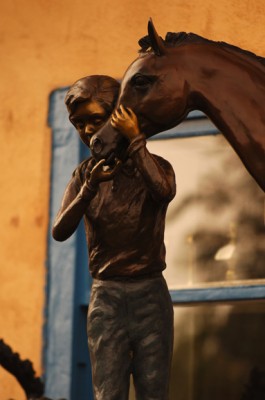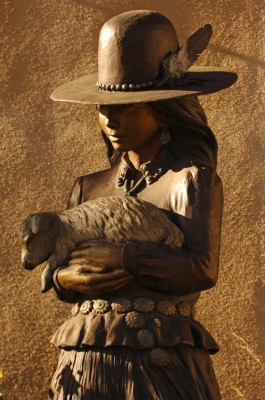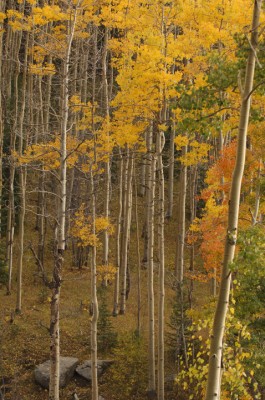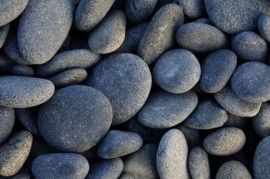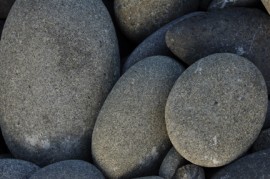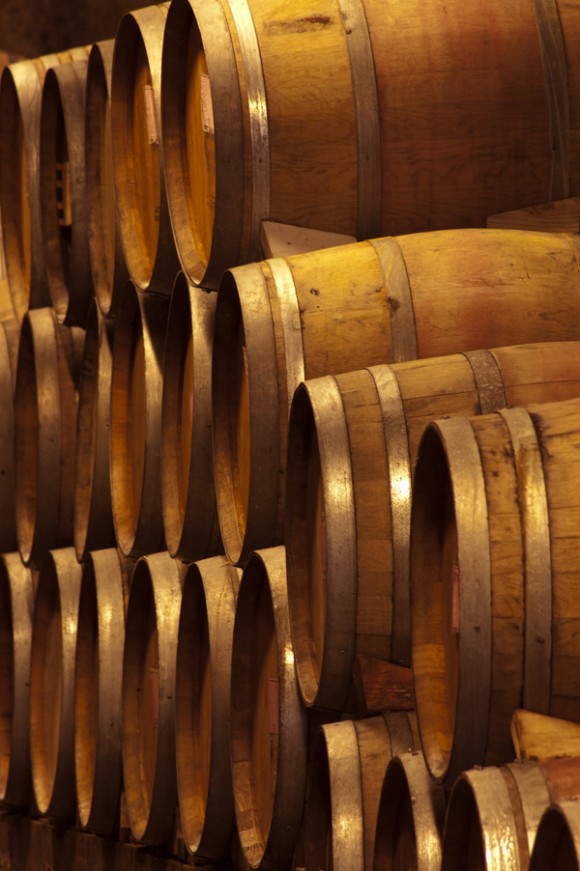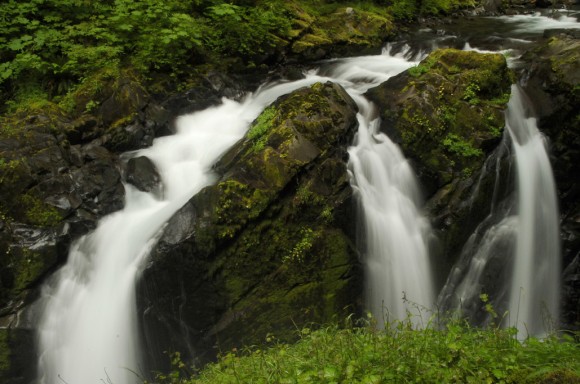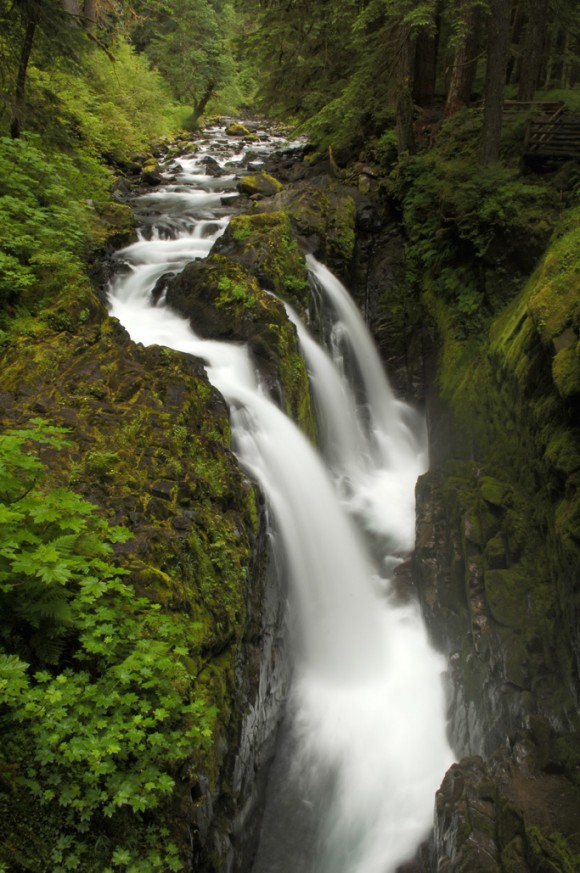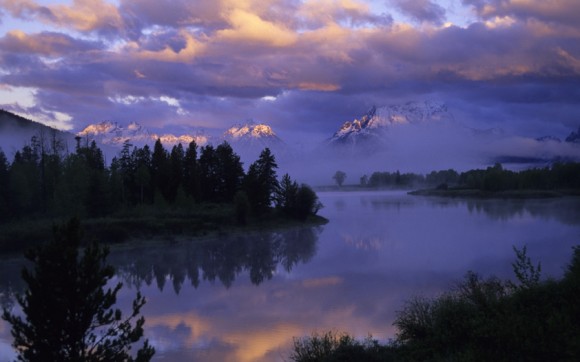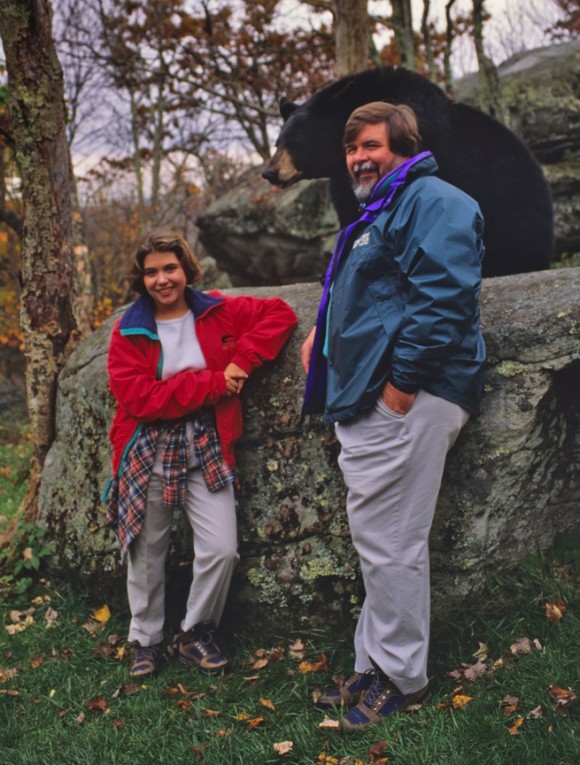Category : The Learning Center
I got a great email that made me laugh and then made me think! Eric Harmon who is a student, friend, and fellow brother in Christ, from South Florida, wrote the following after he got the list of recommended cloths for the November trip, “Oh, my! Jackets? Hats? Gloves? Long sleeve shirts? Heavy socks? What are those things? I don’t even own a pair of long pants, let alone heavy clothing! Looks like I’ll be doing some shopping between now and then, though some of that may be tough to find here in South Florida, especially in the middle of summer!” I laughed long and hard and then realized that people that are just getting into the great outdoors photography scene may actually not know what they will need. Let me go through the list of what I think is the essential check list of outdoor gear for the kind of trips we do where temps vary from zero degrees to 115 degrees! I’m not saying you “must” buy these exact items but I have them all and I know they work well in the field!
This is my ESSENTIAL Gear list for Serious Outdoor shooters:
1. A Good Parka Shell made with Gore-tex or some breathable layer. The shell is to cut wind and rain, snow or sleet, if it’s hailing get under something!!! I own shells from Marmot and North Face, other good brands are Mountain Hardware and L.L. Bean. Prices range on the low end from around $150 to high end up to $500. You can get a very good one for around $150. I once asked the president of Marmot, at lunch, (they were a sponsor of the GAPW), why their parkas were so expensive, he said, “If someone rips a seam while climbing Mount Everest, someone is going to die!” Pretty good answer….. * No, we don’t do stuff that extreme!
2. Some Polar Fleece jackets and pull overs, I own 12 (o.k.) I’ve been fleeced!!! Sorry for the pun, Polar Fleece comes in light, Medium and heavy weight, I own several of each but honestly the feather, light weight and mid weight are the most useful. My favorites are light weight L.L. Bean jacket and a mid weight North Face Denali jacket. I have a feather weight Marmot that is great as a sweater. $50. to $200.
3. Smartwool socks. These mid weight hiking socks are cushion just enough to really help your feet when your trekking around all day! $17. a pair
4. Polar Fleece – Windstopper Gloves. You can’t shoot if your fingers are frozen, I have three pair of these, beccause everytime a pack for a trip I can’t fine the last pair and I replace them! I finally found all three pair, gave one pair to my partner Jim Begley and I still a have a back up pair. At Bryce Canon, before sunrise, you’d pay $100. for a pair, they go for $30.
5. Merrell Moab Ventilator Hiking shoes. If your feet hurt, you will be miserable. These mid weight hiking shoes are so good I own 5 pair. I keep the nice ones for meetings and travel, and the older ones for field use, the worst ones for yard work. I see them on the feet of almost half the field photographers I know, must mean something! Under $100. a pair.
6. I always travel with a light weight Marmot, goose down sleeping bag. Cozy in a cold hotel room or when you camp in the vehicle, and a great emergency bag for a unexpected car breakdown in cold weather.
7. Lightweight Nylon pants. Are great for hot weather, and cut the wind, can also be washed and drip dried in your hotel room, and are much tougher than cotton pants. Around $65. for the regular, $85. for the ones that let you unzip the legs making them into shorts. Google REI
8. Soft Cotton T-shirts. I won’t even say how many t-shirts I own, needless to say, I buy one from every location, every restaurant I love, and any place interesting I travel to, or that appeals to me! Lets just say, a closet full!!! Remember nature and travel photography are not fashion shows and great old, soft t-shirts are perfect and let you show off your personality! I love the Life is Good brand. They are super soft, and I love to spread the message, because, life “is” good!!!! $10. to $30.
9. Smartwool shorty socks. Same great sock as above just short for warm weather and running shoes. Do I run, you bet,to every great cheeseburger I can find!!!!
10. A fire jumpers belt. These heavey duty nylon web bets with staniless steel buckles are great fro outdoors and backup as a rescue rope. REI $30.
11. A fur lined Mad Bomber hat! This is the silliest looking, but WARMEST hat you can wear for serious cold weather! I call mine my Alaska Bob hat! Silly or not, if you have to deal with freezing cold weather, this hat is worth every penny of the $50. Lots of color choices of the shell and fur!! Google Mad Bomber Hats
12. A ventilated Ex Officio Shirt. These shirts and the same type shirt form North Face are fantastic for hot or cold weather and the side zips are great to get a little breeze through the shirt!
Now I know we are talking about a substantial investment to get geared up for working outdoors, but trust me being cool or warm, and well protected from the elements is worth it’s weight in gold. If you aren’t freezing or burning up, or soaked to the bone, you can concentrate on making those killer shots that took you outdoors to begin with!!!
The value leaders in outdoor clothing are REI, L.L. Bean, and Columbia Sporting goods. You’ll pay less and get more from all of these retailers.
Be prepared, know Him!
the pilgrim
*** Just in case you work in very cold climates, a Goose Down jacket can be magic!!!
This post has 3 comments. Click here to read them
This entry was posted on Thursday, September 6th, 2012 at 3:49 pm
You can follow any responses to this entry through the RSS 2.0 feed.
As a tech rep I get questions, lots of questions! I jot down some of the most interesting or relevant ones. Since someone once asked, I thought you might be wondering too!
(1.) FX vs DX sensor size. Which and why? Now before we start, other manufacturers, besides Nikon, make cameras with 35mm size sensors 24×36. and also make smaller sensors that have a 1.2, 1.3 or 1.5 lens factor. To start with, you have to remember that we are now a good 12 years into the history of modern digital cameras. In the first 8 years, the size of the actual pixel had a great deal to do with how low the noise could be at High ISO settings. This is still true today, however much better software in cameras that process the images, have allowed very low noise, even at very high ISOs. Does a larger sensor with larger actual pixels still have superior noise at high ISO? Yes, but not by as large a margin as in the past. So where does that leave us? If you need the absolute lowest noise, an FX sensor or it’s equivalent from other makers is the best solution. If you want a smaller, lighter camera, with smaller lenses, and if ever so slightly higher noise at very high ISO is not an issue, you just might be a DX kinda person! You could save some money too!
(2.) Can you use older lenses on new Hi Res cameras and get good results? Yes, but with qualifiers. I wondered that myself and since I own a stable of old manual focus Nikkor glass I did a pretty serious test with the new D800, and it doesn’t get any higher than that in terms of resolution. First, I picked what were arguably, some of the best of the classic manual Nikkors. They worked incredibly well. Now I must admit that most were shot stopped down to f 8 or lower. Any lens, even those that are not all that great, are at their best stopped down a few stops. Can the newest, most advanced lenses do better on the current cameras? Yes. Does that mean the older lenses “shouldn’t” be used? Not for me, I love the feel of the old glass and the fact that they make you slow down, and when you slow down and are more careful, your work gets better!!! One last thing, using the older lense takes me back to some great memories over a long career, that alone makes it satisfying!
(3.) How many mega pixels do I need? Wow, now we have really stepped in it! First I cannot answer that for you, I have no idea what you do with your cameras. Let me give you some ideas, if you need to make huge prints, (4X6 feet and up), you are going to want at least 24 mega pixels, I said want, not need. I’ve seen massive prints made from the D3s a 12 mega pixel camera!!! The question may come to mind, how much is enough? Now we are getting somewhere. A number of years ago I loved stereo gear and I had a large selection of albums, LPs, 33 rpm records, I know some of you don’t remember that, but when I first heard a music CD, all I really wanted to hear was the new technology! The same thing happened when I first shot the D800. Do I need it, probably not, do I love it, you bet. Could I be happy and do perfectly wonderful images with a high quality 12 mega pixel camera, you bet, but then I’ve seen files form a D800……
(4.) Do I need a Pro body? If you need massively strong build quality, lots of frame rate, the best moisture and dust sealing, high end, long lasting shutter, and your pocket book can handle it, you bet you do! If you truly don’t need those things, (think hard before you decide), the answer is no. For me the D7000 is such an incredible camera, I can’t ever imagine needing more, but that doesn’t mean I won’t own something more! Always remember need and want may be different but we buy on the strength of both!
(5.) Do I really need lenses 400mm and longer? Maybe, depending on what you shoot! If you shoot sports, yes, if you shoot wildlife, yes, if you were for the CIA, o.k. let’s not go there!!! One thing to keep in mind is that with cameras in the neighborhood of 24 mega pixels and larger, you can effectively crop to half the normal frame size so your 70-300 is really a 105-450. Actually this is another great example of why the D800 is a super camera. In Crop Mode the D800 is still over 15 mega pixels. As great as that is, it doesn’t answer the core question. Long glass is expensive, and if you have a great need, you just have to face the music and pony up! If that is the case, let me make a suggestion, the 200-400 and a TC14E II and a DX body, would give you the effective focal length of a range from 200mm to 840mm with and maximum aperture setting of no more than f 5.6! Let me break that down, with a FX body the 200-400 f4 is a, you got it, a 200-400 f4. Add a TC-14E II (1.4 tele-converter), and the 200-400 f4 becomes the equivalent of a 280-560 f 5.6! Now take the 200-400 f4 and put it on a a DX body and it becomes equivalent to a 300-600 f4 (still f4!!!) Now the fun starts, add the TC14E II and you go to 420-840 f 5.6! Now a 200-400 AF-S VR f4 is not cheap, but the price looks a lot smaller when you look at this formula!!! I know what you’re thinking, starting to know you guys pretty well!! What am I doing? 70-300 on FX = 70-300, put it on a DX body and you get a 105-450, which for me is enough! O.K. I do own a secondhand 400mm f 3.5 manual focus Nikkor lens, which is my long glass for the rare occasionI need one, on the DX it is the equivalent of a 600 f 4.5. Lots of ways to skin the cat!! Oh yes, and the D800 in Crop Mode is just like the DX body!
(6.) How much is too much gear? If you can afford it, you can never have too much, however, carrying it is another matter all together! People buy equipment as collectors, as gear lovers, or to display with pride, and that is fine, all worthy pursuits, but for a photographers intending to make images, you need far less gear. I’ve probably beat you to death with this, but for general work, (travel, nature, close-up, people) you can do almost every shot with a wide angle zoom, mid range zoom, a telephoto zoom and some way to do close-ups as micro lens or diopters or automatic extension tubes. How much gear do you need? Are you a photographer, a collector, or both!
(7.) Do I need an expensive Micro/Marco lens for doing serious close-up work? Now we have that pesky “need” word again! If you do a lot of close-up work you might need a Micro lens. Which one depends on what kind of subjects you shoot, but a Micro lens is the trick if you shoot close-ups a lot! Are diopters and automatic extension tubes, bellows less affective? No, but they are not as convenient. I do a great deal of close-up work and I own a 55mm Micro Nikkor, a 105mm Micro Nikkor, and the 200mm Micro Nikkor, but then I really do love to do close-ups! The shot at the top? A point and shoot!
(8.) Are Pro Grade lenses better than amateur based lenses? Yes. Does that mean that less expensive lenses are not good, of course not! I love the 70–300 AF-s VR f4.5-5.6 and it is very, very sharp, and is less expensive (about one fourth the cost), and weighs less than the pro grade 70-200 AF-s VR f 2.8 II. But is the 70-200 a better lens, yes it is! Lenses are highly complex, and the very best employ ED glass, aspherical elements, and very precise physical bodies. One thing to consider is the harder you use your gear, the more you need the Pro Grade stuff. All of that comes at a cost. My advise is to always buy the best lenses you can afford, but do know that some bargains do exist and are worth looking for, my beloved 70-300 is certainly one!
(9.) Is flash the best light source for close-up work? If the goal is to freeze action like a flying insect, or movement, yes flash is the best solution. Some people learn flash faster than others, but with the creative lighting System from Nikon close-ups really are a snap. The one thing you can’t do with flash is see what the result will be without making a shot and examining it. I am also using a new tool I learned about from Mike Moats my friend that does extraordinary close-ups. It is a small multi LED unit, that many manufacturers make, mine is a Promaster LED120. I bought mine at a show from Hunt’s. It is small and hand held and can be position to get just the kind of light you want! That plus a couple of SB-900 Nikon Speed-lights and I can light almost anything!!
(10.) What is the best $200. you can spend on your photography? Actually it’s $199.95, join Kelby Training! Now I know you think this is a self serving suggestion, but honestly, I have learned so much looking at all the other classes, (besides mine), there are classes on almost anything you would like to learn from great instructors, Another great use of your money? Check out the Nikon School of Digital Photography, a fantastic learning experience as well. Education is some of the best money you can spend, the best equipment is of little use if you don’t know how to use it.
Keep the questions coming and we will do this again!
Blessings,
the pilgrim
Now something really serious!
Have you ever asked yourself the key question of life? Why am I here? Well on a purely physical level, you’re here because your parents gave birth to you. On a spiritual level you were created to be His. He loves you so much He gave His only Son for you. If there was only one person in the world, you, He would have still given His life for yours. Now deciding how to use your life, may just take on a new vision and purpose!
This post has 8 comments. Click here to read them
This entry was posted on Tuesday, September 4th, 2012 at 12:57 pm
You can follow any responses to this entry through the RSS 2.0 feed.
First let me say I’m overwhelmed by the response to the last “Why Bother” blog post. When Scott Kelby recommends a post, it sure gets a lot of attention! Thanks Scott. Even more overwhelming for me was your responses, many kind words, and a lot of insight delivered to me as well, thank you very much! Several of you asked if I would expand on the original thoughts, and I would be glad to try!
Some thoughts on being the best. We are a winner society, we love the Super Bowl winners, the World Series winners, the Nobel Peace Prize winners and on and on, and we seldom remember who came in second! There is no hope of remembering number 3 through 10! The problem with being number one is you don’t get to occupy that position for very long, in sports, next year a new champion is crowned. In photography if today you were considered the best photographer in the world, in 15 minutes you would fall from the top spot. So, why bother making that your goal? Why not work hard, and get better everyday, and if you get your 15 minutes of fame, great, if not, enjoy the ride. Let me dig a little deeper. I use to want to be the very best, but not because of my love of the craft, but because of my lack of love for myself. I thought, erroneously, that if I was considered the best photographer it would give my life value. I was wrong, badly wrong! Many other, much more important things, are what gives my life meaning and value, the most important of which is that Christ died for me!
Some thoughts on how to get better, but not beat yourself up. Learning is a process, that has fits and starts. Some days you shoot like a pro, somedays you can’t seem to get a thing right. That is common for all of us. Maybe with years of experience the bad moments lessen somewhat, but everyone has an off day every once in a while. Having an off day is not the problem, the problem is how do you deal with when you do??!! First recognize that you are in a slump. Ask yourself what seems to be wrong, often with close examination, you will find that your mind is on other things and your photographic vision is being clouded by the cares of the world. Years ago when I took people to exotic locations like Africa and Galapagos Islands, I would ask them, on the first day, to put their watch in there luggage, and leave it there. I wanted to emphasize that the next week or two were about the best light, and seeing photographs, schedules meant nothing. If you want to paint a wonderful painting, start with a fresh, and empty canvas!
Some thoughts on the time table of learning. We all learn at different rates, it is not a matter of our talent level, but our pace in life. Some people get really good, very fast, others take years to mature as a shooter. One thing is for sure, becoming a really good photographer is not an overnight affair. I’ve always believed that steady improvement is the best route, it gives you more time at each level to cement your progress and make the new habits a solid part of how your approach photography. Building skill level in photography is like building a house, the foundation is critical and then each succeeding addition must be done properly and be tested for strength, only then can you start to put a roof on it and seal it up! Good building takes time, and your development as a photographer will too! Be patient and have fun!
Some thoughts on using your photography for some good purpose. You will get a great deal more out of photography if you have a purpose in your work. Letting people see how precious God’s gift of nature is to us. Showing people the problems in the world that need to be addressed. Helping people understand the human condition. Sharing the joy of beauty in the world. For me it is a way to reach out to others, and share my faith in God. Good work is always improved when it has purpose!
Some thoughts on giving yourself permission to fail. We all slip and fall, but the most imporatnt question is, do we get up and try again or lay on the ground weeping. There is no crying in photography! (I couldn’t help myself, and sorry about that, to Tom Hanks!)
Let me end by sharing one of the greatest benefits of photography for me. If tomorrow I was to awake blind, I have already seen and experienced more than most people because, as a photographer, I have been trained to see and observe, really see the world around me, and I’ve taken it all in, and seen so much it has brought the greatest joy to my life. Even if blind, I could remember all those glorious moments of light, shape, pattern, lines and form! Thank you Father for this wonderful gift! My prayer for you is that your photography will enhance your life too!
In Him,
the pilgrim
This post has 20 comments. Click here to read them
This entry was posted on Monday, September 3rd, 2012 at 12:56 pm
You can follow any responses to this entry through the RSS 2.0 feed.
The image above is of me flying my ulta-light over the Arizona Desert, what an adventure!! In life I’ve found a number of things that are thrilling and I enjoy them all, but one of the most wonderful adventures for me is learning. As a photographer there is one very good way to learn and improve your work, it’s called the critique. At our workshops we spend a lot of time looking at our attendees images and doing critiques. I think the most effective critique is to ask several questions; (1) Does the image work, (2) If not what is keeping it from working, (3) and finally how can we improve the image? If you could ever attend one of our workshops we can do that for you, but you can do it yourself as well. Let me walk you through how to do self critiques.
Firat an important point, the purpose of a critique is to identify what is holding your images back from being as successful as they could be, not to beat yourself up! I once did a workshop with a wonderful photographer and friend, Pat O’Hara. Pat is an incredible photographer and a great guy. He started a critique session by putting a pretty awful picture on the screen and proceeded to make numerous observations of what was wrong with it. Everyone in the room cringed knowing somebody was being taken apart by the critique. After he finished with his multitude of suggestions, he asked whose it was. No one confessed,then he shocked everyone by saying, it was his from the beginning of his career. Their was an audible sigh of relief. He went onto explain that everyone starts doing work well below their goals. It was one of the most effective critique techniques I’ve ever seen, and we use it to this day ourselves. It’s important to remember that Rome was no t built in a day, and a photographer is not either!!!! So give yourself permission to be in the process of learning, then you will start to see that mistakes are just opportunities toi know what to not do in the future!
O.K. what things do I look for, and that you should look for, when doing a critique?
(1.) What is the subject? Is it presented in a clear and concise way? How many distractions are in the image that draw the eye away from the subject? How could you have prevented the clutter or distracting elements? Look at the image below shot in Santa Fe. It is a perfectly beautiful statue, but the window frame behind it is very distracting, now look at the image below right, see what a difference it makes when we watch out for the background!
See how much more effective the plain background is? Another issue with the subject is how much of the frame does it fill? most often a photogrpah will have more power if the subject is very obvious because it fills the frame. The two images below illustrate this point. I was in Colorado photographing an Aspen grove and these are two of my shots, the one below left is o.k., I think the one below right is much stronger, both shot from the same spot with different lenses!
(2) Is the light working for the subject? A tip here is that angular light in early morning and late afternoon on sunny days will be warmer and have more character and also shows texture because of the angle of the light. It’s worth shooting early and late!
(3) Fill the Frame with the subject! Very few photographs have been made worse by move in closer! Below are to images made of rocks on the beach in Olympic National Park, while both work, I like the tight one! You may not, but if you shoot them both you have two versions!
Below is another shot, made in Sonoma, California, that I hope you feel illustrates the value of cropping tight in the camera, I think it really works!
(4) Was the shot a vertical composition or a horizontal, you should shoot both, but one will be the obvious best solution, as illustrated by these two images of Sol Duc Falls in Olympic National Park.
(5) Is the horizon level? This is easy, use a camera with a level built in or purchase a bubble level, believe it or not it is really hard to get level horizons, but as little discipline with solve the problem, see how the un-level horizon ruins this otherwise great shot?
When you have a great subject, in great light, with good conditions and you compose it effectively, guess what? You’re getting there!!
Have a blessed weekend,
the pilgrim
One last image, my daughter Catherine and I with one of our buddies at Grandfather Mountain in North Carolina! And you thought I was crazy for flying ultralights!!!!
This post has 14 comments. Click here to read them
This entry was posted on Friday, August 31st, 2012 at 2:49 pm
You can follow any responses to this entry through the RSS 2.0 feed.



